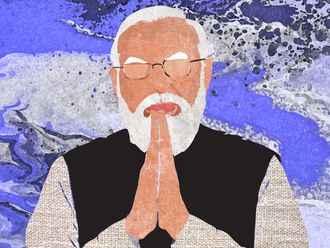
More than a year into the pandemic, the situation is chaotic. Lacking vaccines, lacking resources or lacking good policies, India, Turkey, much of South America and elsewhere are seeing the virus rage as never before. Europe is finally improving after an extraordinarily difficult few months, while in the United States, the pandemic’s end may be in sight.
Are there any lessons that can be extracted from this landscape? And does the course of the 1918 pandemic hold any lessons for today?
To answer the last question first, the 1918 pandemic began in the spring with an intermittent first wave no deadlier than ordinary influenza, then seemed to disappear. A more contagious and more lethal variant caused the deadly second wave, then it also seemed to disappear. In March 1919, another variant sparked a third wave much less deadly than the second wave but more lethal than seasonal influenza. First-wave illness protected against the second wave, but neither first nor second wave infection protected against the third-wave variant. Further mutations, combined with an improved ability of the immune system to respond, helped turn the virus into an ordinary seasonal influenza — until it was replaced by the 1957 pandemic influenza virus.
Covid-19, the illness that can be caused by the novel coronavirus, was never going to disappear, but there is a reasonable chance that it will follow the 1918 precedent and become an endemic influenza-like illness that kills — serious enough, to be sure — and will require vaccine updates but will not require shutdowns. That would be the best case.
In terms of social, cultural and economic effects, however, 1918 is not a precedent. The first wave, especially in the United States, was so mild that it passed without notice, and no city took any public health action. During the second wave, most cities closed schools, theatres and saloons, and some required masks. But one of the biggest differences between the 1918 pandemic and this one is duration. The 1918 disease usually affected a given community for about six to eight weeks, and restrictions generally lasted only three to five weeks — too short a period for any permanent impact on behaviour.
Since the disease disappeared abruptly, society returned to pre-pandemic normal quickly. The third wave hit many cities — though, not all — but no one knew it was coming, so it didn’t affect behaviours, and few places reinstituted restrictions for it.
By contrast, more than a year of covid-19 has already altered our working and living habits. Zoom is here to stay. Fewer office workers will be at their posts this fall simultaneously, affecting everything from commercial real estate to traffic, mass transit use, after-work happy hours and the economics of lunch counters. Architecture will change — windows will open again.
Will the pandemic, as many assume, be followed by a boom? Probably, but those who connect the 1918 pandemic to the Roaring ‘20s ignore the far greater cultural impact of World War I’s 20 million dead and events of 1919, 1920 and 1921. One of the most difficult years in American history, 1919 saw a Red Scare, beatings and lynchings of returning Black soldiers, a race riot in Chicago and related unrest in 25 other cities, the collapse of agricultural prices, an attempted assassination on the US attorney general, violent strikes that froze coal mines and steel factories, a police strike in Boston (Calvin Coolidge’s response earned him the vice-presidential nomination), and a general strike in Seattle. Then came a serious recession in 1920 and 1921. Only after all this did the 1920s roar.
This time around, we have already had our share of convulsions. And we have already seen recession. Pent-up demand and stimulus spending should produce an expanding economy.
As to Covid-19, we are winning the race between vaccination rates and the spread of variants, though it is not over yet. The heat and humidity of summer will help limit the virus’s ability to spread. Last year, I predicted that summer would provide little relief because the vast majority of the population was still susceptible to infection. Now, with at least half the US population vaccinated or about to be, summer should help. But it’s been summer in Brazil and India; as they demonstrate, it’s no panacea.
And if the United States has good reasons to expect full football stadiums this fall, that expectation comes with two caveats. First, variants able to escape vaccines and natural immunity could emerge. The vaccines have kept up so far with the mutations, but that could change.
Second, hubris is not our friend. India’s desperate situation is largely a result of a government thinking it had triumphed over the virus and ignoring scientific advice by reopening fully too soon without widespread vaccination. Our vaccination rates are falling nationally, but several Southern states already lag far behind that national rate, and Florida Gov. Ron DeSantis, a Republican, just issued an order cancelling all restrictions by local governments, an action that might be emulated by other states. These are not good signs, and all could lead to a resurgence of infections.
For much of the world, unfortunately, the situation remains bleak. And even in the United States, we have a ways to go before we can sing that anthem of the 1920s, “Happy Days Are Here Again.”
John M. Barry is a distinguished scholar at the Tulane University School of Public Health and Tropical Medicine.
Washington Post








